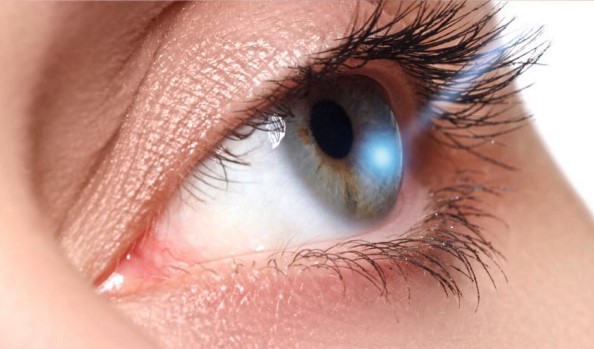
The IrexLaser procedure is a quick, outpatient procedure that involves the use of a special laser which removes pigment and changes the eye color from brown to gray or blue.
Colors of gray and blue are under the surface of the melanin that gives some people their brown eye color. Using the specialized IrexLaser technology to remove the pigment simply reveals the naturally lighter colors that were being hidden underneath.
The laser that is used for the procedure reveals lighter eye colors that were hidden beneath the brown pigment. Furthermore, the procedure does not damage the iris or cause scar tissue to form and the resultant eye color looks fully natural. After the full eye color change has been achieved, an ophthalmologist should not even be able to tell that you underwent this procedure.
The brown pigment that is removed has not been shown to return, therefore, the results are a permanent change in eye color.
During the first week following the procedure, the irises will actually get darker due to the laser treatment. However, as the body begins to naturally remove the remaining brown pigment, your eye color will become progressively lighter and reveal shades of gray or blue. Full eye color change should be achieved approximately two weeks after the procedure.
The clinician who will be performing the procedure will decide if you are an optimal candidate for eye color enhancement after an examination. Typically, a successful PRK or LASIK surgery treatment should not prevent an individual from undergoing IrexLaser treatment. Furthermore, myopia and astigmatism would not hinder this procedure from being performed as long as they are not the result of some other condition that would be exclusionary. Certain conditions such as scarring or clouding of the cornea may make an individual ineligible to receive this treatment, but the clinician will be able to recommend procedures that could correct those types of conditions.
Patients should be at least 18 years old before undergoing this procedure. Clinicians may also impose stricter age requirements.
The IrexLaser procedure is non-surgical and therefore, eliminates the risk of suffering from harmful side effects. No injections or incisions are required and it only involves the use of a small apparatus that helps patients keep their eyelids open. In addition, serious side effects have not been reported after this procedure. In actuality, this laser technique is the least invasive cosmetic eye color enhancement procedure that is currently on the market.
The clinician who performs the procedure will advise you as to when you can drive and return to work. Typically, patients can drive and return to their normal routines shortly after the procedure. Night driving is not generally recommended during the first day because your pupils will be temporarily constricted and this will make it slightly harder to see at night.
Clinicians who are skeptical about the safety of this procedure have indicated that pigmentary glaucoma is one of the possible side effects of eye color enhancement treatment. To date, clinical trials involving this procedure have NOT demonstrated that it can cause pigmentary glaucoma.
Pigmentary glaucoma is the result of a condition called pigmentary dispersion syndrome, which develops due to the abrasion of the pigment that is located at the back of the iris. Pigment at the back of the iris is a lot thicker than the pigment located in the front. In addition, abrasion causes this thicker form pigment to break into large pieces that move toward the frontal edge of the iris. The broken pieces of pigment become lodged in this area, reduce the normal flow of ocular fluid, and increase pressure in the eye. This abnormal increase in pressure may cause glaucoma.
The IrexLaser procedure targets the thin layer of pigment at the front of the eye and uses a special frequency to initiate the natural removal of the brown pigment. This procedure does not involve abrasion techniques. In actuality, the targeted pigment is released through microscopic particles that are removed through ocular fluid. This type of laser technique has even been used to treat pigmentary glaucoma by causing the large pieces of pigment that have become stuck to break into smaller sizes that can more easily be excreted.
Therefore, although some clinicians have addressed a legitimate concern, we have conducted clinical research and designed a laser that promotes the safe removal of only the thin pigment at the front of the iris. Moreover, the results of clinical research do not indicate that pigmentary glaucoma is a problem that arises after undergoing the IrexLaser procedure.
WhatsApp us
